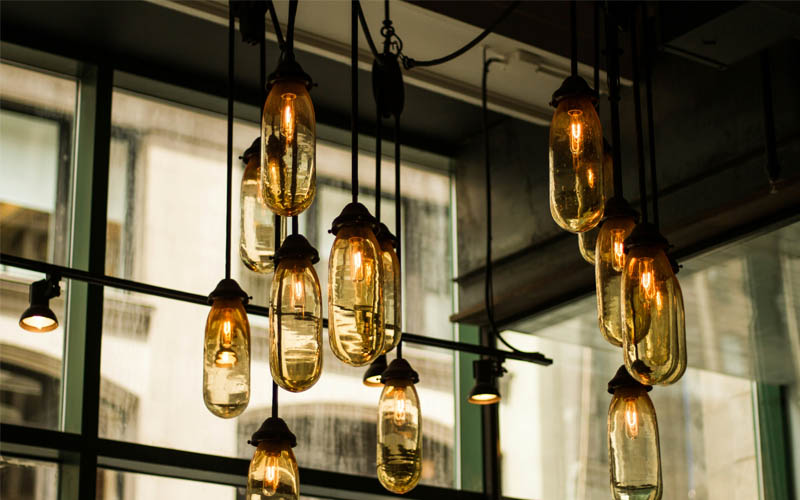In the world of interior design, we speak in materials, colours, textures, and form. But perhaps the most poetic — and often underestimated — design language is light.
Lighting isn’t just a functional necessity; it’s the invisible brushstroke that adds emotion, clarity, and rhythm to every room. When used thoughtfully, lighting becomes a tool for storytelling. It defines how a space feels, not just how it looks.
Mood before material: Why light comes first
Most interior projects start with inspiration boards filled with sofas, surfaces, tiles, and tones. But few begin with a question as fundamental as: “What kind of atmosphere do I want to create?”
Lighting is mood architecture. A warm pool of amber light by a reading chair can whisper comfort. A clean wash of white light in a kitchen signals clarity and energy. Dimmed accent lighting behind a headboard tells the body it’s time to unwind.
The right lighting doesn’t just support the space — it defines it.
Layered lighting: The unseen framework of interior harmony
Designers often talk about three types of light: ambient, task, and accent. When used together, these layers form a cohesive visual and emotional structure.
● Ambient lighting sets the tone. Think of it as the base note in a song — soft, even, and consistent.
● Task lighting brings focus and function — under-cabinet strips, desk lamps, vanity sconces.
● Accent lighting is the storyteller. It highlights textures, features, and architectural moments. It creates drama, depth, and visual interest.
Layering these thoughtfully can completely transform the experience of a space — especially when controlled with dimmers or smart systems that adapt to different times of day or activities.
For expert-led projects, teams like those at Lighting Design Online specialise in creating custom lighting plans that integrate seamlessly into interior design, balancing beauty with function.
Lighting and texture: Revealing the soul of a room Light reveals. And how it reveals depends on direction, colour temperature, and intensity.
A raked light across a stone wall pulls out texture and history. A downward pendant above a dining table creates intimacy. Uplighting behind a curtain turns fabric into sculpture.
As we move toward more tactile and natural interiors — linen, rattan, handmade tiles, matte finishes — the role of lighting as a texture-enhancer becomes more important than ever.
Designing with emotion in mind
Lighting impacts the nervous system. It affects our sleep, our productivity, our sense of safety. This is why human-centric lighting is no longer a luxury — it’s a necessity in good design.
Cooler lights early in the day support alertness. Warmer lights in the evening support rest. And transitional zones — like entryways or hallways — benefit from adaptive lighting that gently shifts between those states.
Understanding these biological responses helps designers create spaces that don’t just look good, but genuinely feel right.
Case in point: Lighting in modern Indian interiors
In India, where architectural diversity spans from compact city flats to open-plan bungalows, lighting design faces unique challenges — and opportunities. False ceilings are popular, but often overused with a single cove strip and recessed spots. The result? Flat, uniform light with no atmosphere.
Instead, projects that embrace contrast — a wall washer to highlight a textured brick surface, a pendant over a teakwood table, a concealed uplight to emphasise ceiling height — feel far more intentional and luxurious.
With careful planning, lighting becomes the thread that weaves traditional materials with contemporary function.
Practical lighting tips for designers and enthusiasts 1. Start with feeling. Ask how you want people to feel in each space, then light for that. 2. Don’t rely on a single source. Use multiple layers to avoid shadows and monotony. 3. Avoid over-lighting. Brightness doesn’t equal better — balance is key.
4. Think in zones. Lighting different areas independently gives more control. 5. Use dimmers wherever possible. They’re the easiest way to create flexibility.
Final thoughts: Light as the finishing touch — or the first stroke
Great design isn’t just about what fills a space. It’s about how that space is experienced — moment to moment, day to night. And light is what connects it all.
Whether you’re designing your own home or working on a client project, treat lighting not as an add-on, but as a central character in your design narrative. Let it speak — softly, boldly, warmly — and you’ll find that every room begins to tell its own story.
Read more Architecture & Interior Designing articles at Middle Height. Follow us on Facebook, Instagram and LinkedIn.


